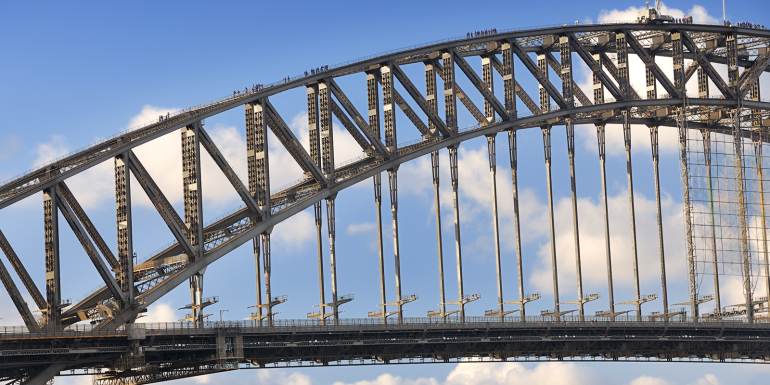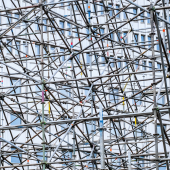Bridge designers must heed ‘invitation to climb’ warning, says CROSS

Bridge design engineers, architects and their clients should avoid introducing “invitations to climb” to their structure designs following a report of a thrill-seeker climbing on a bridge, risking serious injury to themselves and others.
A report to CROSS UK says that incidences of people inappropriately crossing newly constructed bridges show that in some cases more consideration could be given to discouraging climbing, scaling, or even riding on arches and other parts of bridge structures. The reporter was concerned that serious injury to persons inappropriately crossing bridges and others, could occur.
Bridges that feature arches that connect down to deck level may particularly encourage access, says the reporter. Further, where there is a lack of any substantial protection preventing access to the arch then there is little to prevent climbing, riding or other access.
The reporter considered that the operational safety challenges presented by all, but particularly innovative designs, must be considered and adequately resolved at the early design phase. Designers of bridges should consider not only established modes of inappropriate access but also emerging modes of personal transport methods and the potential safety concerns they generate.
Key Learning Outcomes
- Designers, clients, operators and users should contribute to risk assessments that consider inappropriate access
- Address inappropriate access early in the design process
- Consider if disciplines outside of engineering could contribute to the consideration of mitigation measures
- Be aware that mitigation measures may need to be adapted over the service life of a structure
- Designers should stay alert to how designs can develop to best serve society.
Expert Panel Comments
This is an extensive and difficult subject area that has considerable sensitivities. Stunts, as described, could be unplanned (for example dares and drunken incidents) or indeed planned (for example protesters). Extremely important questions arise as to how far infrastructure designers and clients should go to counter inappropriate behaviour, vandalism and malicious acts or indeed other behaviours such as when people are not of stable mind. These questions arise for many types of building and civil engineering structures.
The designer alone cannot deal with all the potential areas of misuse by members of the public. Designers, clients, operators and users should contribute to risk assessments and agree upon design solutions and any misuse mitigation measures that are appropriate. It may be appropriate to include parties such as police, local authorities or health boards in related discussions since the issues may be far wider than engineering problems. Solutions often benefit from the input of a far wider range of disciplines, especially those professionals who understand the minds of people with suicidal tendencies. The danger to children gaining access to structures and treating them like a playground is an ongoing problem which must be addressed. Malicious acts that could have disproportionate consequences should also be given consideration. The Government’s Centre for the Protection of National Infrastructure (CPNI) provide guidance on protecting critical infrastructure against malicious acts.
Mitigation Measures
Different sectors will have different approaches – the rail sector for instance, will consider ‘threat and vulnerability assessments’ as well as security measures in the design of infrastructure.
Measures could include:
- Anti-climb
- Omission of flat surfaces or means to gain grip
- CCTV and signage
- Public address announcements
- Helplines
- Neighbourhood and emergency service initiatives.
Trespass risk assessments to industry standards are also undertaken. Clearly, strategies to prevent inappropriate access to arch bridges will be considered by designers and clients. As put forward by the reporter, emerging personal transport modes (such as e-scooters) may require alternative mitigation measures to those previously adopted. As with all design, the earlier such matters are addressed in the design process the more likely better outcomes will be found.
In conclusion, designers must keep in mind good sense (if something is clearly an 'invitation to climb' it needs guarding), but designers must also be aware of emerging trends in society so that good sense is kept up to date, said CROSS UK. It is very doubtful that rules can be set down, or (even if they could) that they would remain static. Designers must therefore have time to engage such that they can stay alert to how designs can develop to take account of the society that engineering serves.








